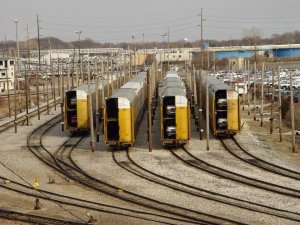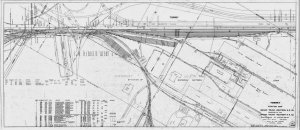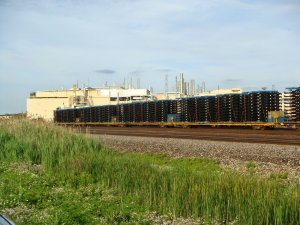ScottoT
Member
I'm forcing myself to think a little more outside the box, than the linear thinking I've been using when considering my layout design.
My very first thought about trying to re-create my prototype layout, was very linear.
On the prototype, A is followed by B, then C, then D, etc. Obviously, it is very difficult to replicated that in model rr layouts, but I was thinking I needed to.
Question 1 - Do most of you who have designed your layout followed that process?
Q1A - if you do not, how do you redesign the layout accordingly? using very general terms.
In terms of my layout planning, to run a main line, I was thinking I would need to run some sort of very modified "oval" along my outside of my benchwork, to simulate a long running main.
Question 2 - On this site, looking at pictures and layout designs, I have noticed lots of layouts that incorporate, along the wall narrow type layouts, that it seems to me come to an end, with helixes, to allow for another level staging, or yards, etc. There are many that have the track come to an "end point". Going one direction. While I understand this need, as not everyone can design and have a layout that completes the circle.
I'm wondering what you do when your train comes to that end, and you want to send it back the opposite direction. Pick it up and re-assemble going the opposite way?
Once again, thank you in advance for your suggestions, imput and advice, on how to handle my quandry.
Scott
My very first thought about trying to re-create my prototype layout, was very linear.
On the prototype, A is followed by B, then C, then D, etc. Obviously, it is very difficult to replicated that in model rr layouts, but I was thinking I needed to.
Question 1 - Do most of you who have designed your layout followed that process?
Q1A - if you do not, how do you redesign the layout accordingly? using very general terms.
In terms of my layout planning, to run a main line, I was thinking I would need to run some sort of very modified "oval" along my outside of my benchwork, to simulate a long running main.
Question 2 - On this site, looking at pictures and layout designs, I have noticed lots of layouts that incorporate, along the wall narrow type layouts, that it seems to me come to an end, with helixes, to allow for another level staging, or yards, etc. There are many that have the track come to an "end point". Going one direction. While I understand this need, as not everyone can design and have a layout that completes the circle.
I'm wondering what you do when your train comes to that end, and you want to send it back the opposite direction. Pick it up and re-assemble going the opposite way?
Once again, thank you in advance for your suggestions, imput and advice, on how to handle my quandry.
Scott




